Invisalign in Indonesia
Search and Compare the Best Clinics and Doctors at the Lowest Prices for Invisalign in Indonesia

Find the best clinics for Invisalign in Indonesia
With Medijump you can browse 6 facilities offering Invisalign procedures in Indonesia. The cheapest price available is $960 in Bali. And for the cheapest price globally, prices start from $45 in Turkey.
Invisalign in Bali
Price: $ 960
Turkey offers the best prices Worldwide
Price: $ 45
From 2 verified reviews
Jacqui van Niekerk, 08 January 2020
Dr Andhika, Dr Joshua and the team have done such an exceptional and amazing job. They are truly experts in their field and by far the very best and most professional dental centre. We highly recommend these lovely people.
From 27 verified reviews
michael hardie, 02 April 2020
Fantastic friendly staff. Never experienced the normal anxiety that I feel when visiting dentist. Plus no pain at all.5 stars
From 46 verified reviews
sella marsilia, 15 September 2020
Tempatnya bersih, dokternya baik hati dan penyayang, alat2nya lengkap, dari semua dokter yg saya datangi, baru kali ini gigi saya ditangani dgn sgt baik. Krn saya punya masalah gigi yg susah ditangani selama ini. Recomen banget pokoknya! Dan yg terpenting dari semua penanganan yang sangat memuaskan ini..harganya masuk akal!
From 53 verified reviews
Muhammad Reza Ichsan, 02 September 2020
One of the best clinic in Kuta. Offered dental and aesthetic services
From 11 verified reviews
Yorri Farli, 15 August 2018
The service is friendly, doctors and assistants are good and friendly. His work is good and neat. young doctor temperature children renowned photographers. 🙏 Thank you elite dental and aesthetic clinic.
Bali Dental & Implant Centre, located in Gianyar, Bali, Indonesia offers patients Invisalign procedures among its total of 48 available procedures, across 2 different specialties. The cost of a Invisalign procedure ranges from Rp15,000,000 to Rp20,000,000, whilst the national average price is approximately Rp50,475. There is currently a lack of information available on the specialists practicing at the Dental, and they are not accredited by any recognized accreditations institutes
- Home
- Indonesia
Compare Before & After Photos of _procedure_photos.phpInvisalign
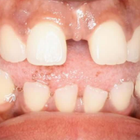

Front view
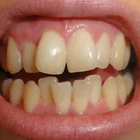
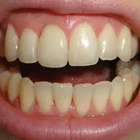
Front view
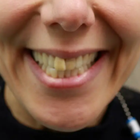

Front view
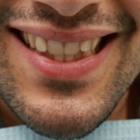
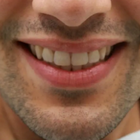
Front view
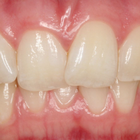

Front view
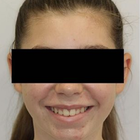
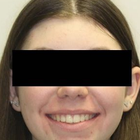
Front view
WHY US?
At Medijump, we're making medical easy. You can search, compare, discuss, and book your medical all in one place. We open the door to the best medical providers worldwide, saving you time and energy along the way, and it's all for FREE, no hidden fees, and no price markups guaranteed. So what are you waiting for?

Free

Best Price

Widest Selection

Risk-Free
What you need to know about Invisalign in Indonesia

Also known as Clear-Aligner Treatment. Invisalign is the clear alternative to conventional dental braces used to adjust and straighten teeth, whilst simultaneously improving the patients smile. Through the use of virtually invisible and removable custom-made smooth plastic aligners, dentists are able to place the Invisalign over the teeth allowing for a gradual shift.
Invisalign manufacture the most well known of these clear aligners - the product comprises of a series of computer-generated aligners that are tailor-made to the patient’s teeth. By changing aligners every two to three weeks, the patient’s teeth will gradually move into the correct alignment. The aligners are easy to take off throughout the treatment, allowing the patient to brush and clean their teeth and eat as per normal. Compared to traditional braces, there are no metal brackets and they’re almost invisible to the eye.
This process can help to correct Spacing, Crossbite, Open Bite, Crowding, Excessive Overjet, and Deep Bite.
What is the cost of Invisalign in Indonesia?
The pricing for Invisalign within Indonesia hinges considerably on several aspects. These comprise the complexity of the patient's condition, the length of the treatment period, and the particular clinic offering the service. In general, the cumulative price remains in line with conventional brace treatment, thus positioning Invisalign as a financially feasible choice for many. Moreover, several dental insurance schemes offer coverage for Invisalign, mitigating the direct costs that the patient incurs.
Additionally, it should be noted that over time, Invisalign may prove to be a financially prudent choice. As it assists in rectifying improperly aligned teeth, it can deter future health complications associated with insufficient oral hygiene such as periodontal ailments or tooth decay, thereby saving you the expense of high-priced future dental treatments. Therefore, making an investment into Invisalign may play a part in promoting sustained dental wellness.
How Long Should I Stay in Indonesia for a Invisalign Procedure?
Since this is a non-invasive procedure, you may return to your holiday immediately after you have received your first set of clear aligners. However, strict compliance with your scheduled appointments with your orthodontist is essential. You will be required to see the dentist a few times during your stay so you should be aiming to stay in Indonesia for as long as possible, with 2 weeks being the absolute minimum. Subsequent appointments for check-ups and adjustments are typically scheduled every six weeks, but these are relatively quick visits.
What's the Recovery Time for Invisalign Procedures in Indonesia?
One of the primary benefits of Invisalign compared to other orthodontic methods is the notably short healing time. Typically, patients go through minimal or no pain during the treatment period. There might be a slight discomfort or pressure sensation in the initial days following the introduction of a new aligner, which is an indication that the aligner is effectively shifting your teeth to their correct position. Such discomfort generally settles after a few days.
It's significant to note that maintaining excellent dental hygiene and following the instructions given by your medical professional can considerably influence the successful recuperation and ultimate outcome of your Invisalign. This might entail properly looking after your aligners and regular dental appointments to track your progress.
What sort of Aftercare is Required for Invisalign Procedures in Indonesia?
Your treatment time will also be based on how much your teeth need to be properly aligned. Typically, patients are required to use Invisalign from ten to twenty-four months.
You should avoid hot drinks while wearing the Invisalign since it is made from clear plastic, it can be deformed by hot liquids, any flavored drink, any drink that contains sugar and/or acidic can form cavities and/or stain the Invisalign.
It’s best that you remove your aligners each time you eat, plaque and food particles can get trapped in your aligners. This will lead to the formation of cavities and bad breath, so it is very important that you brush your teeth after every meal.
What's the Success Rate of Invisalign Procedures in Indonesia?
Globally, Invisalign demonstrates a substantial level of success, and similarly, in Indonesia. Research indicates a large number of individuals experiencing significant enhancements in not only their smile but also their complete dental wellbeing post undergoing Invisalign. This procedure is additionally seen to positively influence self-worth and living standards. Nonetheless, the triumph of Invisalign is majorly dependent on the patient's dedication to adhering to the advised daily 20-22 hours of aligner use and consistently keeping up with scheduled dental visits. Since Invisalign can be removed anytime, your treatment’s success will rely heavily on how frequently you will use clear aligners
What Should You Expect Before and After the Procedure
Before your treatment, you will need to consult your orthodontist first. During your scheduled consultation, you will undergo a series of tests including x-rays, digital scans of your teeth or photographs to determine your diagnosis and plan your treatment procedure. The end-goal is for you to have a healthy bite, your top and bottom teeth must be proportioned properly.
Once all tests have been made, the specialized computer software will be used to design a plan on how your teeth will be moved from their current position to their best position possible. Invisalign is generated using a computer to make aligners especially designed for you and are clear colored. Your aligners will be changed every 2 to 3 weeks, which will allow your teeth to move into alignment. You will also be required to use it for twenty to twenty-two hours a day. Since Invisalign is non-surgical, anesthesia is not a requirement during the whole procedure.
Are there Alternatives to Invisalign Procedures in Indonesia?
While Invisalign is a great alternative to straighten your teeth and to have that perfect smile you are aiming for, some people may not be able to afford the treatment. The good news is that there is an alternative to clear aligners, such as Clear Correct - this also makes use of clear plastic aligners to straighten your teeth. The total cost for this type of aligner is usually cheaper than Invisalign. However, Invisalign uses top-notch planning software to determine your treatment plan, making it much easier to attain a successful result.
What are the Potential Risks of Invisalign?
Although Invisalign is typically deemed safe, comparable with most medical procedures, it is not completely devoid of potential complications. Frequently reported challenges entail discomfort, pronounced when transitioning to fresh aligners, and it may transiently influence your verbal communication. Also, there is a susceptibility to dental caries and periodontal disease if appropriate oral care is neglected throughout the procedure. Although infrequent, the effectiveness of Invisalign might not match up to the conventional braces in extremely difficult cases.
Should you get Invisalign or Braces?
Invisalign has become a very popular alternative to metal brackets. Unlike metal braces that stay cemented onto your teeth for a long period of time. Invisalign is a series of detachable clear plastic aligners that guide your teeth into its proper position and alignment. Other advantages of the use of Invisalign are:
- Comfort - since it is made of thin and flexible plastic, it will not irritate the soft tissues in your mouth unlike metal braces and its metal wires.
- Better oral hygiene and Greater Dietary choices - At any stage of the treatment you can remove the aligners to allow yourself to eat and also to Brush your teeth at least twice daily.
- Discreet look - Invisalign is an invisible plastic material that will go unnoticed on your teeth once you use it.
- Teeth-Grinding Protection - it can also function as a nightguard that can protect your teeth from excessive grinding and clenching habits.
One important thing to know is that, although Invisalign is one alternative option to traditional braces, it is not for everyone. A clear aligner is usually used on patients who have moderately crowded teeth or have minor spacing issues on their teeth. Furthermore, because it is custom-built to be a tight fit, it is best used for adults or teens. Patients who have more serious spacing problems and crowded teeth, including patients who have severe overbites, under-bites or cross-bites will require a more intricate treatment.
Invisalign v's Conventional Braces
- Invisalign can be worn with more confidence due to the difficulty in seeing them.
- Invisalign feels more comfortable, with braces irritating and sometimes even chafing the inside of the mouth.
- Invisalign is perfect for athletes, who are able to remove them during sport.
- Braces are semi-permanent, whereas Invisalign can be removed at any time, so fewer trips to the dentist are required when compared to Invisalign.
- Braces are quicker to close gaps or straighten teeth.
- Braces can make some foods difficult to eat, whereas, with Invisalign, they can be removed whilst eating tricky meals.
Whilst the information presented here has been accurately sourced and verified by a medical professional for its accuracy, it is still advised to consult with your doctor before pursuing a medical treatment at one of the listed medical providers
No Time?
Tell us what you're looking for and we'll reachout to the top clinics all at once
Enquire Now

Popular Procedures in Indonesia
Prices Start From $1

Prices Start From $1

Prices Start From $1

Prices Start From $48

Prices Start From $1

Prices Start From $1

Prices Start From $1

Prices Start From $11

Prices Start From $1

Recommended Medical Centers in Indonesia for Invisalign

- Interpreter services
- Translation service
- Religious facilities
- Medical records transfer
- Medical travel insurance
- Health insurance coordination
- TV in the room
- Safe in the room
- Phone in the room
- Private rooms for patients available

- Interpreter services
- Translation service
- Religious facilities
- Medical records transfer
- Medical travel insurance
- Health insurance coordination
- TV in the room
- Safe in the room
- Phone in the room
- Private rooms for patients available

- Interpreter services
- Translation service
- Religious facilities
- Medical records transfer
- Medical travel insurance
- Health insurance coordination
- TV in the room
- Safe in the room
- Phone in the room
- Private rooms for patients available

- Interpreter services
- Translation service
- Religious facilities
- Medical records transfer
- Medical travel insurance
- Health insurance coordination
- TV in the room
- Safe in the room
- Phone in the room
- Private rooms for patients available

- Interpreter services
- Translation service
- Religious facilities
- Medical records transfer
- Medical travel insurance
- Health insurance coordination
- TV in the room
- Safe in the room
- Phone in the room
- Private rooms for patients available

- Interpreter services
- Translation service
- Religious facilities
- Medical records transfer
- Medical travel insurance
- Health insurance coordination
- TV in the room
- Safe in the room
- Phone in the room
- Private rooms for patients available

- Interpreter services
- Translation service
- Religious facilities
- Medical records transfer
- Medical travel insurance
- Health insurance coordination
- TV in the room
- Safe in the room
- Phone in the room
- Private rooms for patients available

- Interpreter services
- Translation service
- Religious facilities
- Medical records transfer
- Medical travel insurance
- Health insurance coordination
- TV in the room
- Safe in the room
- Phone in the room
- Private rooms for patients available

- Interpreter services
- Translation service
- Religious facilities
- Medical records transfer
- Medical travel insurance
- Health insurance coordination
- TV in the room
- Safe in the room
- Phone in the room
- Private rooms for patients available

- Interpreter services
- Translation service
- Religious facilities
- Medical records transfer
- Medical travel insurance
- Health insurance coordination
- TV in the room
- Safe in the room
- Phone in the room
- Private rooms for patients available
Invisalign in and around Indonesia
About Indonesia
Indonesia is a country in Southeast Asia, located between the Indian and Pacific oceans. It is the 4th most populous country in the world with over 260 million inhabitants. The country consists of more than 17,000 islands, which makes it the largest island country in the world. It is packed with beaches, volcanoes, tropical jungles, exotic animals, and culture. This wonderful country invites any adventurous traveler to explore its dramatic landscape. Today, Indonesia is also a potential medical tourism destination. Although it is not as popular as its neighboring countries such as Malaysia, Singapore, and Thailand in terms of medical tourism, the country actually houses numerous excellent medical centers. Many of the medical practitioners are well-trained and can communicate in English. The medical centers are equipped with cutting-edge technology and offer a wide range of affordable treatments. Some of the most sought-after treatments are blepharoplasty, liposuction, and breast augmentation.
Popular Parts of Indonesia
From busy metropolises, and sparkling beaches, to tropical rainforests, tourists will be able to find anything they want here.
- Jakarta is the capital of Indonesia. It is the melting pot of Indonesia's many cultures because thousands of people from all over the country live and work here. The city is home to numerous museums, some of which are the biggest in the country, such as the National Museum of Indonesia and the Museum of Modern and Contemporary Art in Nusantara (MACAN). The most famous landmark in the city is the National Monument or Monas which commemorates the Indonesian struggle for independence. The city also has a unique old city known as Kota Tua, where tourists can find many interesting colonial buildings.
- Bali is Indonesia’s main tourist destination which attracts more than 15 million tourists every year. The island is packed with striking beaches, diverse marine life, jungle-covered mountains, lively nightlife, opulent culture, and spiritual energy. Almost every beach on the island is worth visiting, particularly Seminyak, Nusa Dua, Sanur, and Padang Padang Beaches. You can visit the Pura Tanah Lot and witness its scenic beauty or go to Ubud Monkey Forest to watch the monkeys and explore the sacred temples.
- The Special Region of Yogyakarta is the center of Java’s traditions and it is the only region in Indonesia that officially recognizes the monarchy. The region is home to numerous ancient buildings and temples. Visit Borobudur temple in the early morning to watch the sunrise, and watch the sunset from Prambanan or Ratu Boko temples. Tourists who are eager to learn about the region’s past can wander around Taman Sari, a park of palaces, pools, and waterways belonging to the sultan.
- Medan is the largest city on the island of Sumatra and it is a gateway to the western part of Indonesia as well as a busy trading city. The most important attraction in Medan is Lake Toba which is one of the natural wonders of the world. It is a massive crater lake with an island in its center. The island, named Samosir, is almost as big as Singapore. This enormous lake has a depth of 450 meters, making it more like an ocean rather than a lake. The clear lake with picturesque mountains in the background gives an incredible view that will leave anyone in awe.
- Bandung is widely known as Parijs van Java or the Paris of Java because of its resemblance to Paris and European cities. Located on a river basin surrounded by volcanic mountains, it has a significantly cooler temperature than any other part of Indonesia. The city is a weekend gateway for people from the surrounding cities and it is popular for its delightful food, fashionable boutiques, creative arts, and lush green spaces. The city is filled with Art Deco, Neoclassical, and Gothic buildings such as the Savoy Homann Hotel and De Vries Building.
Weather and Climate in Indonesia
Indonesia experiences an entirely tropical climate. The average temperatures can vary based on the area. Coastal areas have an average temperature of 28 °C, the inland and mountain areas have an average of 26 °C, and the higher mountain areas have an average of 23 °C. There are two seasons in the country, but the seasons can start differently in each region. Generally, June to October is the dry season and November to March is the rainy season. The dry season is influenced by the Australian continental air masses and has a slightly cooler temperature than the rainy season. Tourists can expect mostly sunny days, but there will be some short rain showers. The rainy season can be very humid, and wet, and has a significant amount of rain.
Getting Around in Indonesia
Indonesia is well-connected by airports in almost every region. However, the largest airports are Soekarno-Hatta International Airport in Jakarta and Ngurah Rai International Airport in Bali. Both airports serve domestic and international flights to major cities around the globe. There are budget airlines in almost every airport, including Air Asia, Citilink, and Wings Air. Domestic flights can be rather expensive but will make traveling around the cities a lot easier.
Getting around the islands of Java and Sumatra can easily be done by trains operated by PT. KAI. There are 5 classes of trains: economy, business, executive, priority, and sleeper. The economy class can be a little uncomfortable and crowded, but tourists can get around several cities for as low as $4. Since the country is an archipelago, tourists can also travel from one island to another by ferry boats (long-distance) and speed boats (short distances such as Bali to Lombok).
Most of the cities will have their own mode of transport. The most common mode of transport is taxis and buses. Taxis are normally metered, but some drivers refuse to use the meter and force tourists to pay a fixed fare. Tourists should avoid riding these kinds of taxis and always insist on using the meter. The most reliable taxi companies are Blue Bird and Express. Bigger cities like Jakarta have MRT, LRT, and KRL (local trains).
Tourist Visas in Indonesia
Citizens of 170 jurisdictions can visit and stay in Indonesia for up to 30 days. Visa on arrival is available for 68 countries including Japan, the United Kingdom, and the United States. Nationals not listed in the visa exception agreement and visa on arrival need to obtain a visa before entering the country. It is advisable to check at your nearest Indonesia Embassy or Consulate for the visa policy. All visitors will need to have a passport valid for at least 6 months and a valid return ticket.
Additional Information
- Local Currency: The local currency is Indonesian Rupiah (Rp) and $1 will get you approximately Rp14.000.
- Money & Payments: ATMs that accept international cards are widely available in many cities. Credit cards are accepted in most established restaurants and hotels. If you are planning to visit small towns, it is advisable to carry some cash. Tipping is not essential but will be highly appreciated.
- Local Language: The official language is Bahasa Indonesia and people in major cities and tourist areas will speak and understand English.
- Local Culture and Religion: Most of the population follows Islam, but there are small groups of Hindus, Christians, Buddhists, and Confucianism. It is important to know that Indonesian people are friendly and conservative. Avoid wearing revealing clothes except on the beach.
- Public Holidays: Indonesia celebrates numerous national and religious holidays such as Independence Day, Eid Mubarak, Christmas, Vesak, and Nyepi.
Popular Searches
- Plastic Surgery in Thailand
- Dental Implants in Thailand
- Hair Transplant in Thailand
- Breast Augmentation Thailand
- Gastric Sleeve in Thailand
- Gender Reassignment Surgery in Thailand
- Laser Hair Removal in Bangkok
- Botox in Bangkok
- Dermatology in Bangkok
- Breast Augmentation in Bangkok
- Coolsculpting in Bangkok
- Veneers in Turkey
- Hair Transplant in Turkey
- Rhinoplasty in Turkey
- Stem Cell Therapy in Mexico
- Rhinoplasty in Mexico
- Liposuction in Mexico
- Coolsculpting in Tijuana
- Rhinoplasty in Korea
- Scar Removal in Korea
- Gastric Sleeve in Turkey
- Bone Marrow Transplant in India
- Invisalign in Malaysia
- Plastic Surgery in the Dominican Republic
- Tummy Tuck in the Dominican Republic
- Plastic and Cosmetic Surgery in Poland
- Rhinoplasty in Poland
- Hair Implant in Poland
- Dental Implants in Poland
- IVF in Turkey





